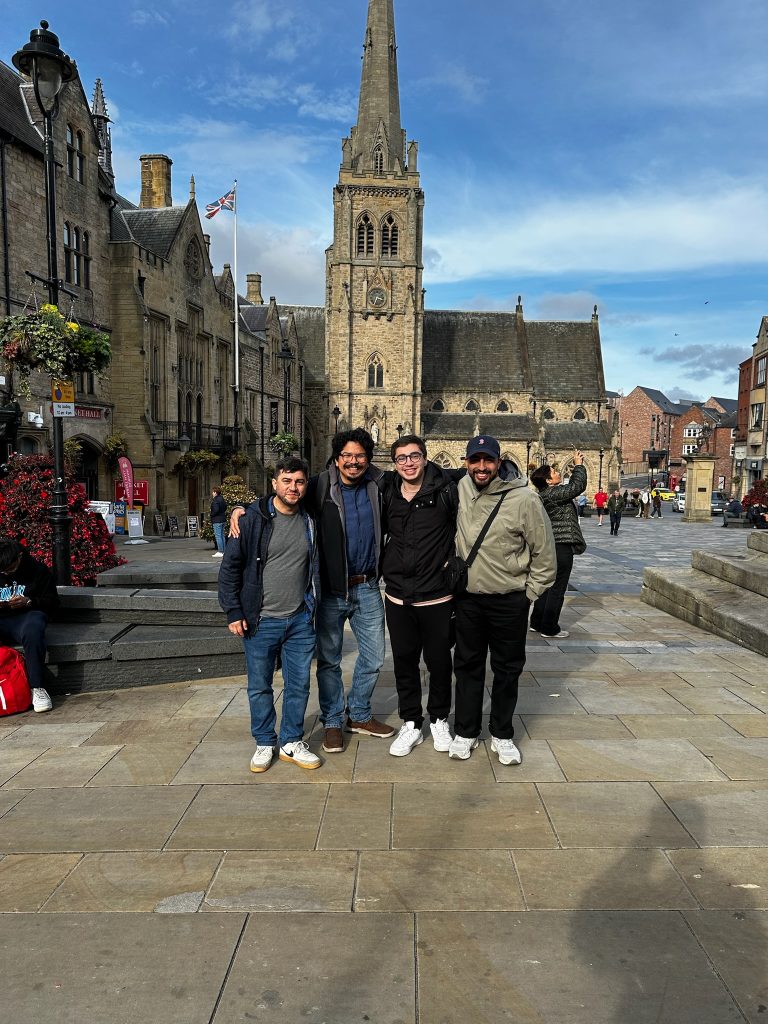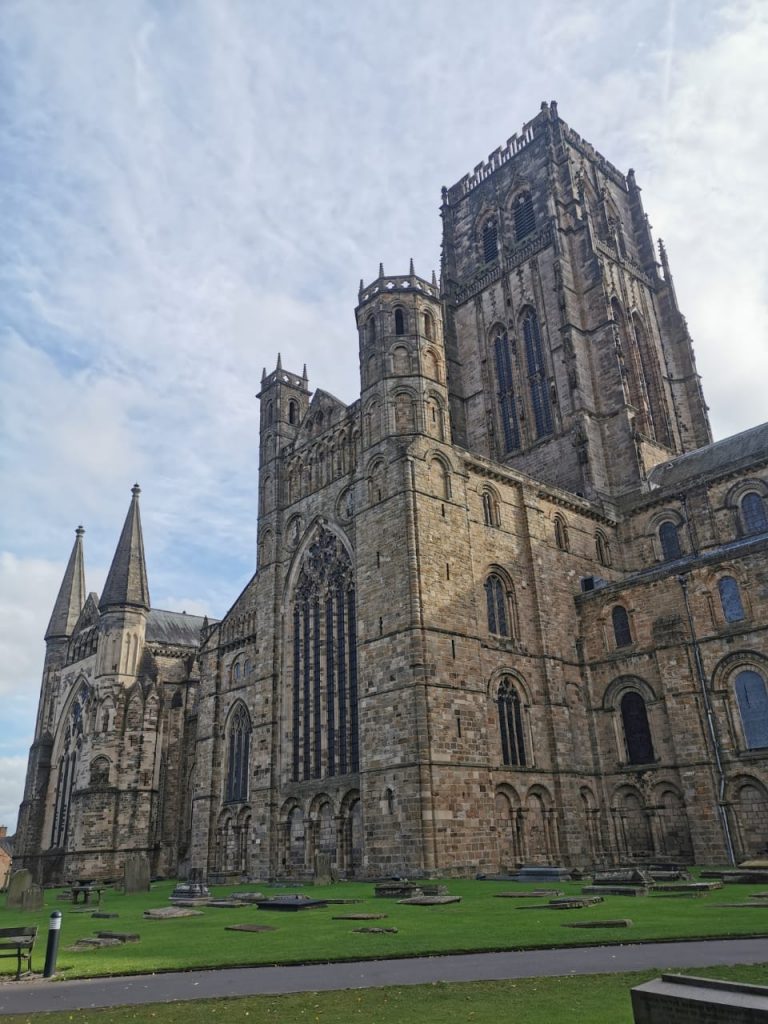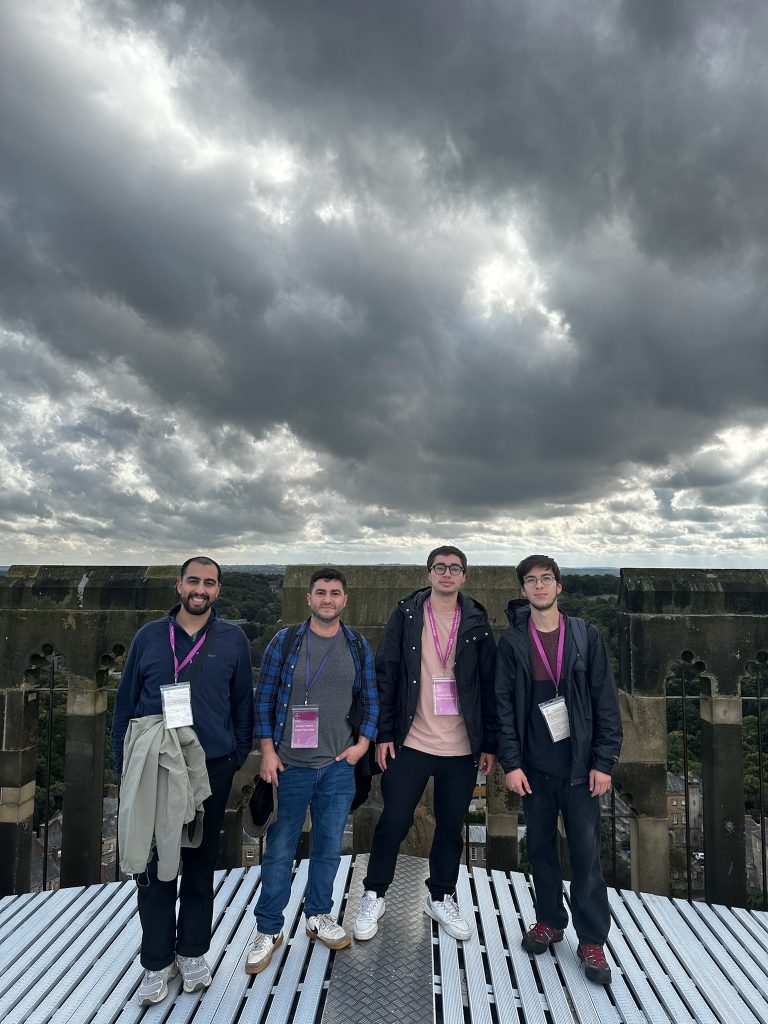Researchers Esteban Vera and Darío Pérez, director and co-director of the SEETRUE project, along with four members of their research teams, presented at the Wavefront Sensing in the ELT/VLT Era VIII conference at Durham University, England.
From September 23 to 25, the 8th edition of this workshop focused on research and advancements related to wavefront sensors for giant telescopes, primarily exploring the methods and technologies used for their operation.
Esteban Vera, the Director of the SEETRUE Project awarded by the National Agency for Research and Development, is also part of the Scientific Committee Organizing this event, which took place at Durham University, UK.
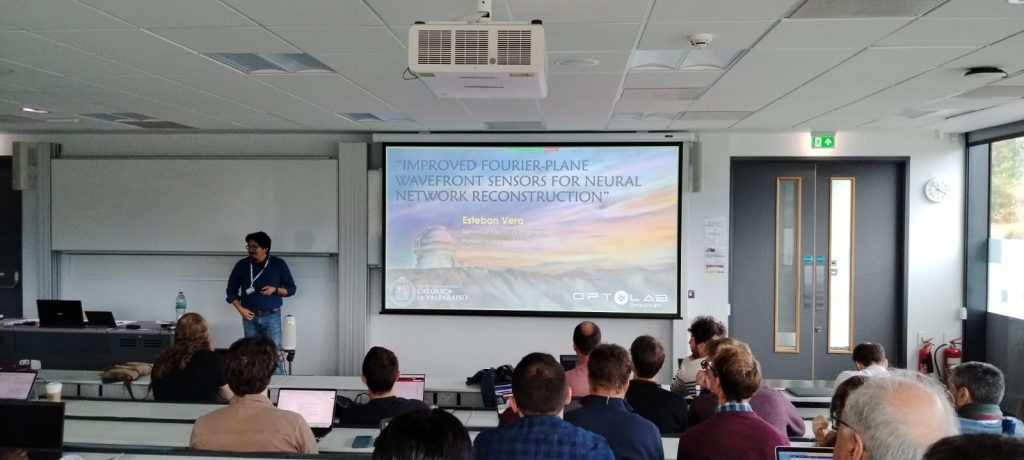
During the conference, Professor Vera presented Improved Fourier-plane wavefront sensors for neural network reconstruction, discussing the advancements achieved at the Optoelectronics Laboratory he leads at PUCV (Optolab). He detailed the design and optimization of a wavefront sensor from its inception to recent discoveries.
He highlighted the sensor’s behavior when adding a preconditioner in the Fourier plane using neural networks and how this affects or improves the sensor’s performance depending on the geometry’s number of faces.
Professor and Co-Director, Darío Pérez opened the workshop with his talk titled Spatiotemporal statistics of optical turbulence at the ground layer, presented during the “Laboratory and Sky Demonstrations of New Designs and Concepts” session.
In his presentation, he discussed results obtained at astronomical sites, where deviations from classical models used to describe turbulence in the atmospheric boundary layer under strongly convective conditions were observed.
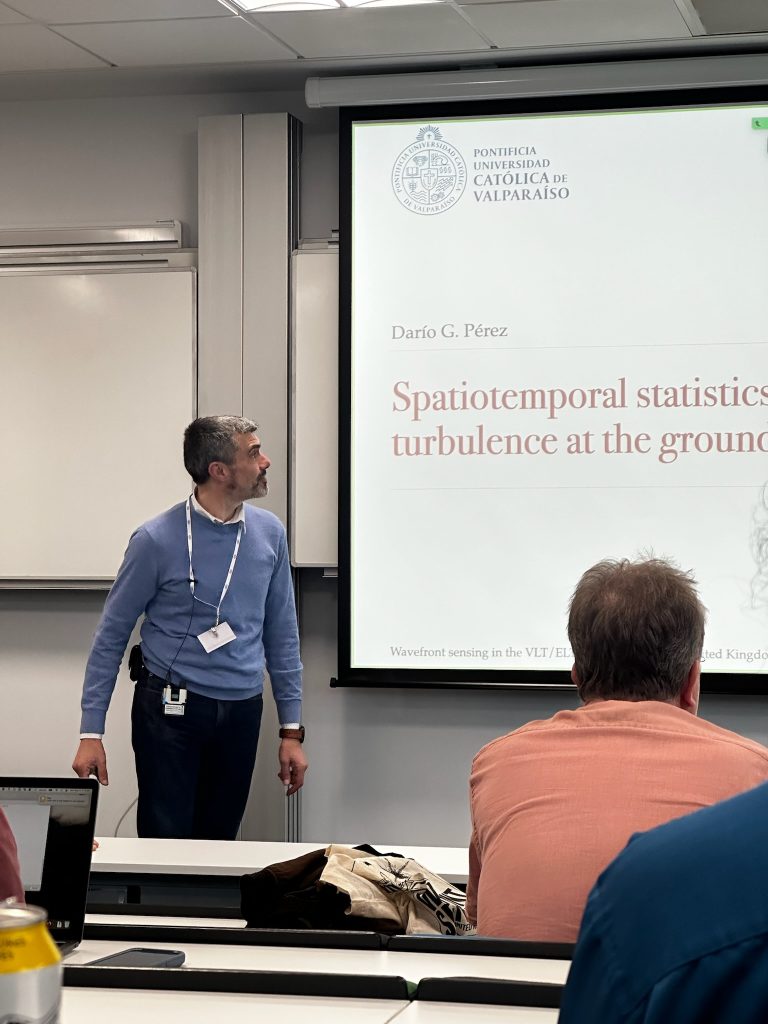
“We showed that during the day and part of the night towards dawn at astronomical observatories, turbulence significantly deviates from expected conditions, and predictive models fail to correlate with observed values”, he explained.
He added “in the laboratory, we observed similar deviations under controlled conditions. Additionally, we implemented a technique capable of detecting these characteristics using optical tomography”.
The professor expressed, “this was my first time participating in this workshop, and I found the environment very interesting, with great potential for new collaborations”.
Researchers attending from the SEETRUE project, through the Optolab and the Statistical and Atmospheric Optics Laboratory (@SOL) at PUCV, presented their research during the poster session on the first day of the conference, answering questions from attendees worldwide.
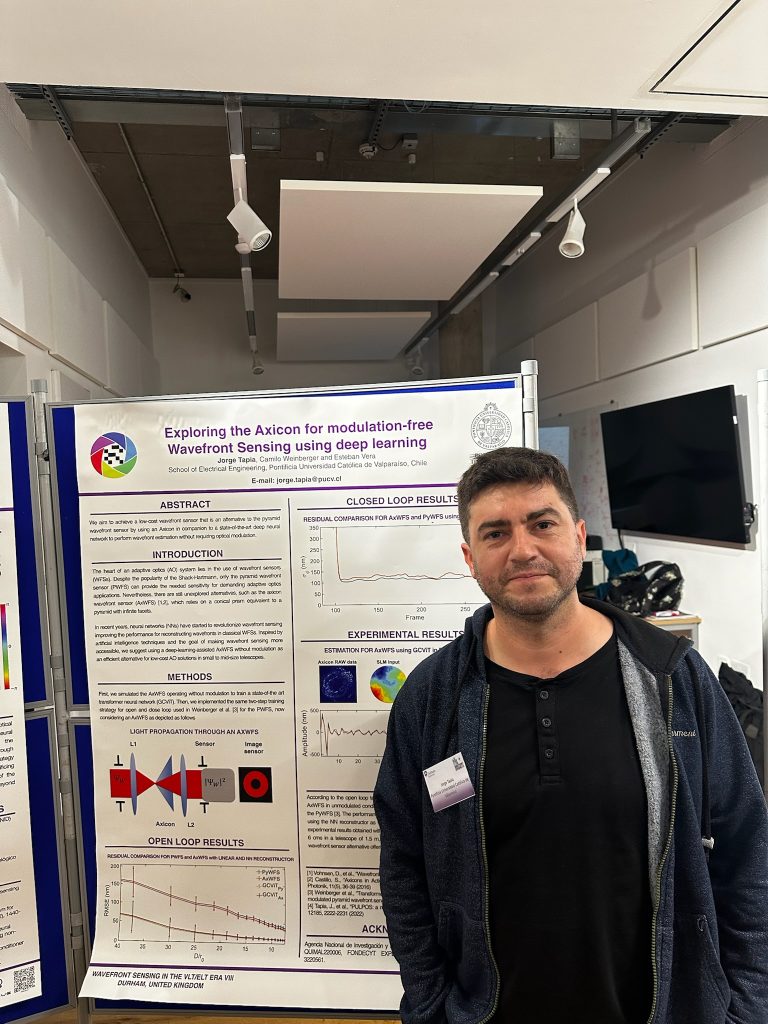
Jorge Tapia, a postdoctoral researcher from Optolab, shared his work Exploring the Axicon for modulation-free Wavefront Sensing using deep learning, presenting a wavefront sensor called Axicon that, combined with machine learning, offers an alternative to pyramid sensors.
Other Optolab research presented included work led by Bastián Romero, currently pursuing a PhD in Electrical Engineering at PUCV, and master’s students Nicolás Hernández and Benjamín González.
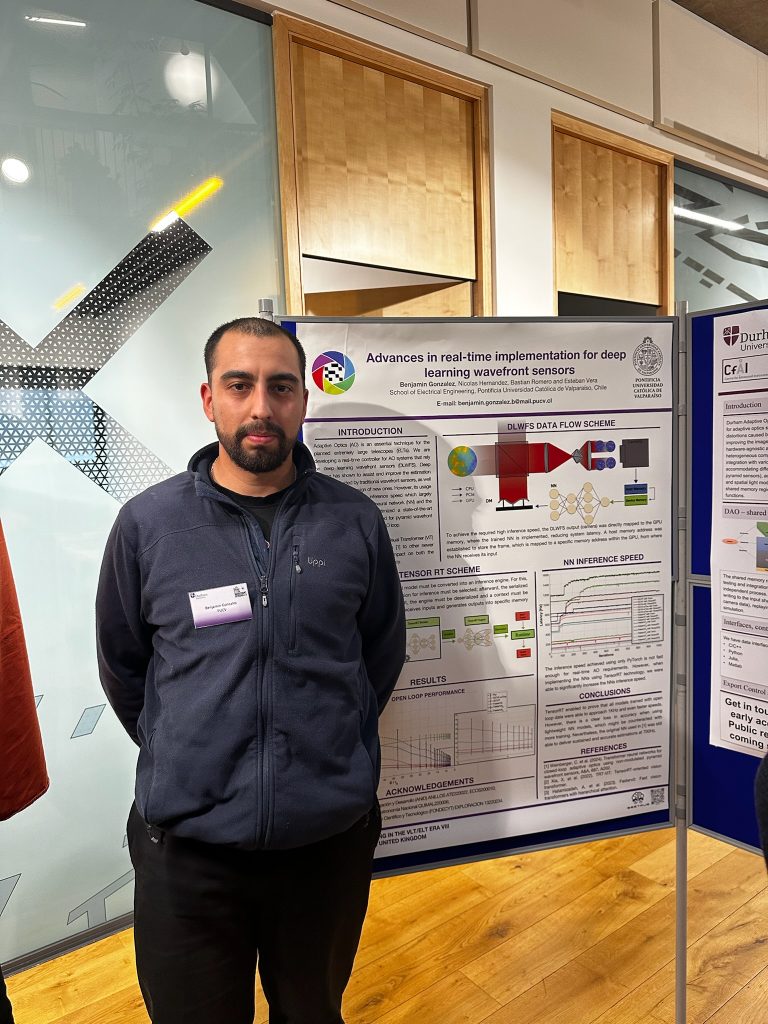
Bastián Romero’s poster was titled Piston sensing using multi-shot coded aperture complex wavefront sensing. Meanwhile, Benjamín González and Nicolás Hernández, master’s students in Electrical Engineering and members of Optolab, presented Advances in real-time implementation for deep learning wavefront sensors and Joint deep learning optics and reconstruction for unmodulated pyramid wavefront sensing, respectively.
“My poster discussed the work we have done at Optolab to control a real-time adaptive optics system with wavefront sensors trained with deep learning”, noted Benjamín González.
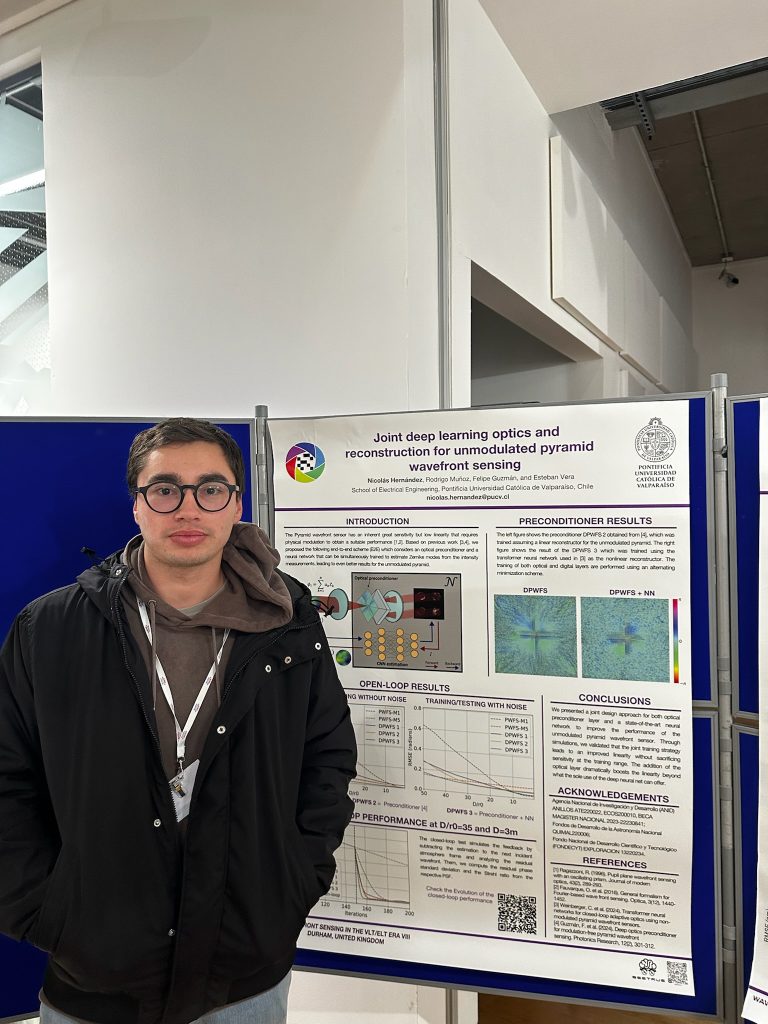
Nicolás presented a design for an adaptive optics system proposing the joint use of a preconditioner with state-of-the-art neural networks, validating through simulations that this improves linearity without sacrificing sensitivity.
Regarding their conference experience, they remarked, “there was a lot of diversity among attendees, and the audience was more specialized compared to other conferences I’ve attended”, noted Nicolás. Both highlighted that they learned a great deal during the event, the talks were very interesting and good, providing a general topic per session, but all centered on the main theme, wavefront sensors”, added Benjamín.
Lastly, Pablo Garrido, a master’s student in Science with a focus on Physics and a member of the @SOL laboratory, presented his research Emulating atmospheric surface layer conditions with a forced convector for optical turbulence studies. He explained their laboratory work involving a device designed to simulate turbulence generated in telescope domes and the advancements achieved so far.

“My experience at the conference was wonderful; it not only helped me explain my work to others and improve my communication skills but also allowed me to learn about others’ work and generate ideas through conversations. It was a great opportunity for both academic and personal growth”, said the master’s student from IFIS PUCV.
Pablo had not previously had the chance to present outside the country and noted the event’s “excellent organization and the hosts’ friendliness, who were very willing to address your concerns. Also, the attendees were very interested in each other’s work, which is very constructive for your academic development. It was an excellent learning opportunity”, he explained.
We congratulate the researchers involved in the SEETRUE project for their successful participation in this important event, which is vital not only for learning about advancements made by other groups but also for communicating their own work on wavefront sensors and atmospheric turbulence information that will be key for the new generation of Extremely Large Telescopes (ELTs) already being installed in our country, Chile.
